In many parts of America, the cost of living has skyrocketed out of control. The resulting increase in costs for things like rent, groceries, utilities, healthcare, and transportation has seen thousands of Americans pack up and move to greener (or at least cheaper) pastures. There are still plenty of cities in the good ol’ U.S. of A where your dollars stretch a little bit farther. These places are in stark contrast to the most expensive cities in the country.
We based this list on the data compilied by the Council for Community and Economic Research’s (C2ER). They measure various cost of living variables and weigh them against factors like median household income, house values, and unemployment rates. The results are the 12 cities in America (population at least 50,000) where you can cheaply live. Be warned, though, that lower costs of living often come with lower paying jobs or places with few entertainment options.
12. Texarkana, Texas/Arkansas
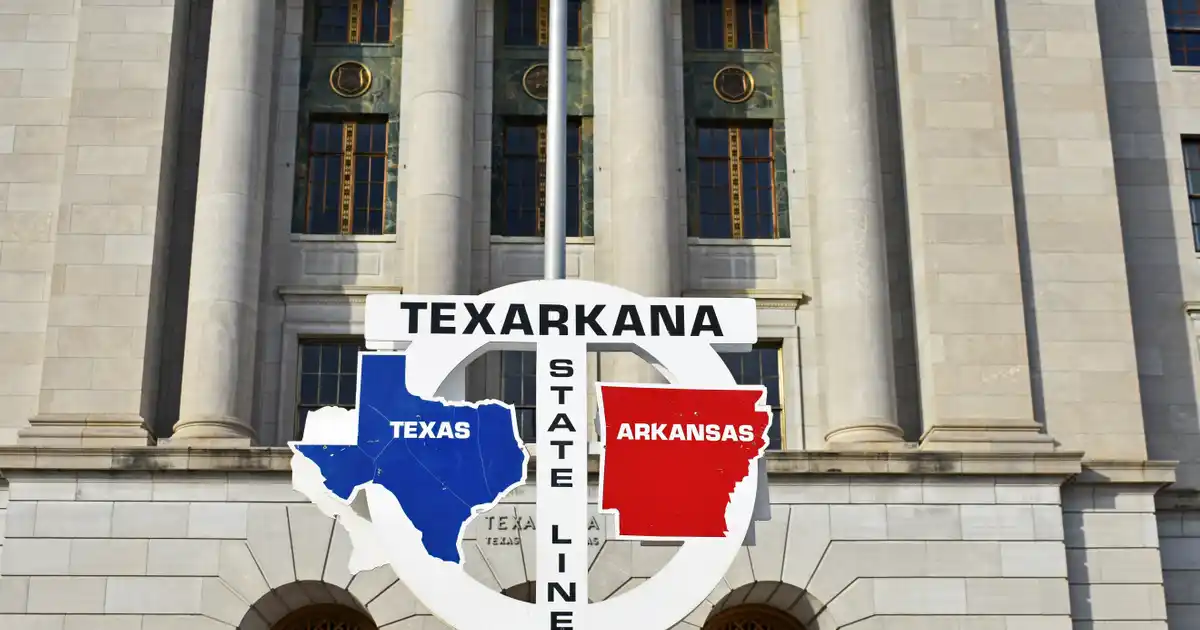 Shutterstock
Shutterstock- Cost of living: 15.7% below U.S. average
- Metro population: 149,308
- Median household income: $51,544
- Median home value: $117,200
- Unemployment rate: 5.1%
Technically, this is two cities in two separate states. However, the state line dividing Texas and Arkansas runs directly down the center of Texarkana. It’s really one combined city that just happens to have multiple state addresses. Regardless of which side you choose, the cost of living in Texarkana is fairly cheap.
The average rent in this twin city is only $934 a month. The median home value is also way below the national average, at $117,200. Groceries, utilities, and healthcare are generally cheaper here too. The downside is that the median household income is only $51,544, meaning you’re unlikely to enjoy both a high-paying job and a low cost of living.
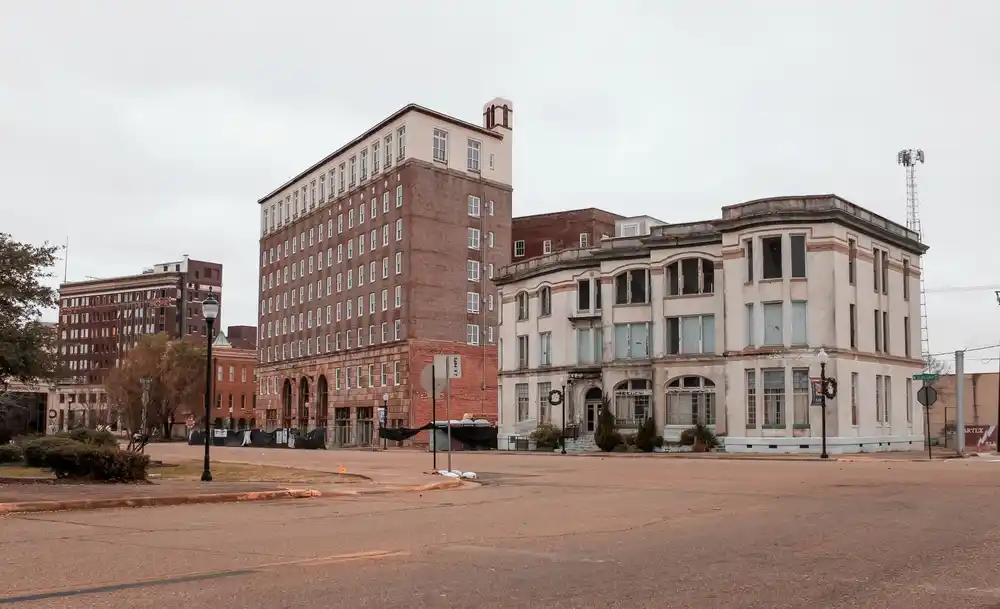 Shutterstock
Shutterstock11. Augusta-Aiken, Georgia/South Carolina
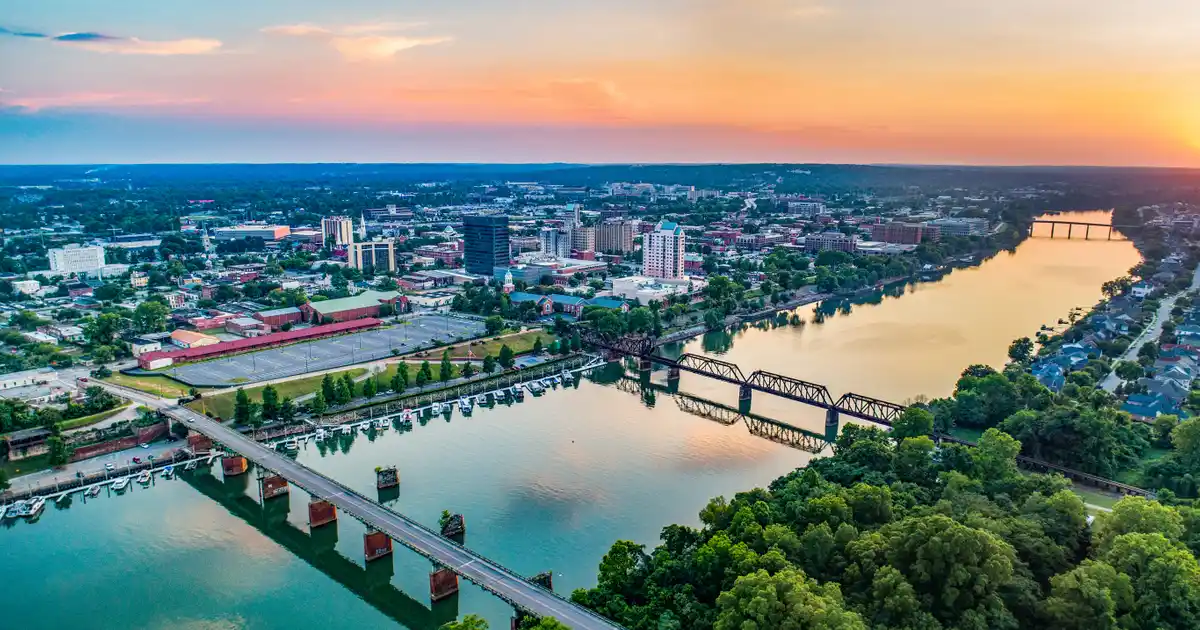 Shutterstock
Shutterstock- Cost of living: 16% below U.S. average
- Metro population: 610,648
- Median household income: $55,143
- Median home value: $161,800
- Unemployment rate: 3.5%
There’s more to Augusta than the world’s most famous professional golf tournament. Sure, The Masters is a huge deal for golf enthusiasts, but the 600,000+ population of Augusta knows there’s a lot more to their city. Like Texarkana, the city is actually on a state border. That means it includes Aiken, South Carolina.
These two cities combine well, to create a place where the cost of living is 16% below the national average. The cities are home to multiple cybersecurity firms, partly thanks to the nearby Fort Gordon — home of the U.S. Army Cyber Command. Augusta-Aiken is also a regional hub for medical science and biotech, thanks to Augusta University.
Groceries are roughly 10% cheaper here and housing is a whopping 30% below national averages. Although Augusta-Aiken is one of the larger cities on our list, it’s only a two-hour drive from Atlanta. So you’re not too far from big city lights, if you’re craving a taste of metropolitan life.
 Shutterstock
Shutterstock10. Hattiesburg, Mississippi
 Shutterstock
Shutterstock- Cost of living: 16.3% below U.S. average
- Metro population: 168,469
- Median household income: $48,359
- Median home value: $145,300
- Unemployment rate: 5.4%
Like almost every city on this list, #10 brings us more Southern hospitality. You’ll find Hattiesburg in the state of Mississippi, where the cost of living is generally low all over. The 170,000 residents of this historical city enjoy a 16.3% dip in standard expenses, compared to national averages. The average home value is only $145,000! You’ll also pay less for utilities, transportation, healthcare, and rent (if you can’t buy).
Hattiesburg (and its immediate surroundings) is home to some big government institutions — the University of Southern Mississippi (pictured) and Camp Shelby. The latter is the largest National Guard training center east of the Mississippi River. While Hattiesburg is full of charm (museums, theaters, and art galleries galore), one of it’s most attractive features is how close it is to other major cities.
New Orleans is just 115 miles away, if you need a visit to the Big Easy to unwind for a weekend. You can also drive 90-minutes to the beaches and riverboat casinos of Mississippi’s gulf coast, if that’s your thing.
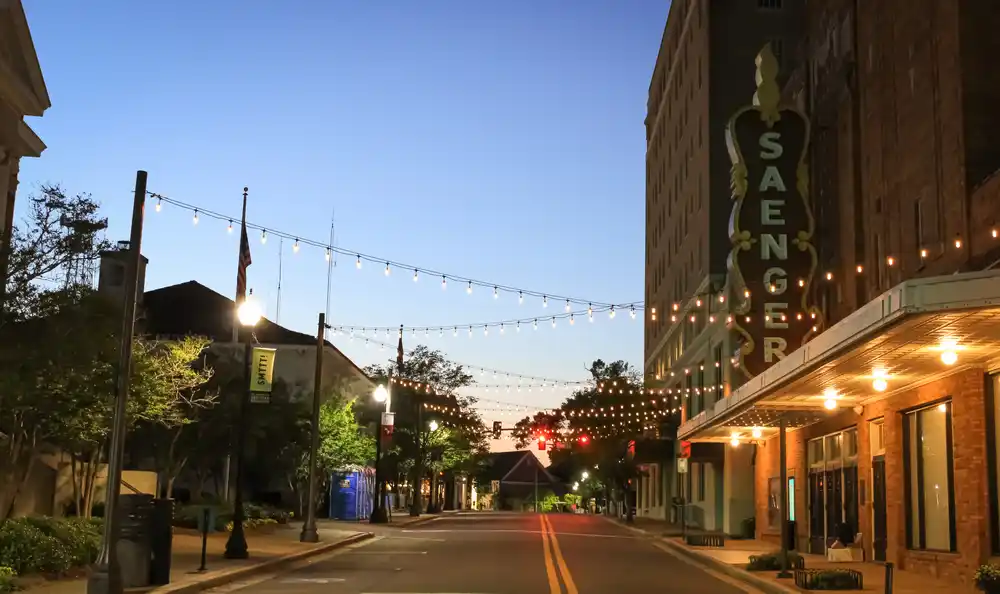 Shutterstock
Shutterstock9. Knoxville, Tennessee
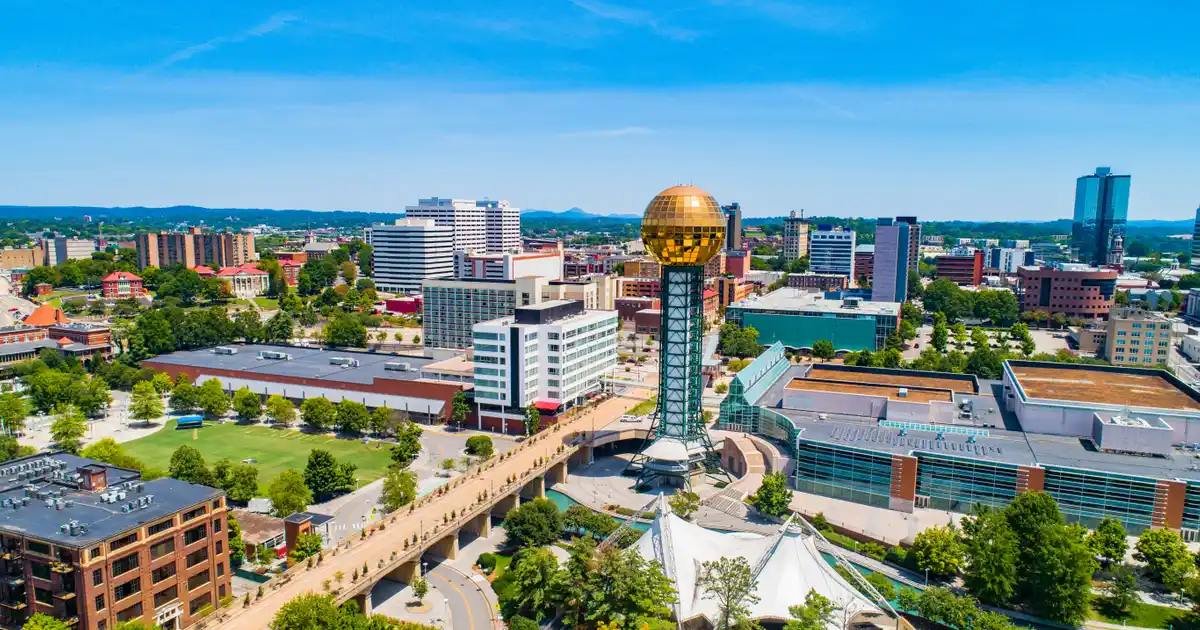 Shutterstock
Shutterstock- Cost of living: 16.4% below U.S. average
- Metro population: 869,525
- Median household income: $56,623
- Median home value: $186,900
- Unemployment rate: 3.5%
There are multiple cities in Tennessee that would make this list if it was longer. However, Knoxville reigns supreme as the cheapest city in the Volunteer State. It’s also the largest city on our list, with a population of 870,000. Despite its larger size, Knoxville has retained a cost of living that sits 16.4% below the national average.
Knoxville, the former capital of Tennessee before Nashville took the title, is both historic and modern at the same time. The city held great significance in the Civil War, so there’s plenty of historical attractions to check out. It also acts as the base for the Great Smoky Mountains, giving nature enthusiasts plenty to explore.
 Shutterstock
Shutterstock8. Kokomo, Indiana
 Shutterstock
Shutterstock- Cost of living: 16.9% below U.S. average
- Metro population: 82,544
- Median household income: $53,440
- Median home value: $109,800
- Unemployment rate: 6.8%
No, not the same place that the Beach Boys famously sang about. (Fun fact: the tropical paradise in that song is actually fictional.) We’re talking about Kokomo, Indiana. This small city (population 83,000) is an excellent place to settle for cheap living. The median household income is $53,400 and the media house value is only $109,000. That bodes will for would-be home buyers.
Kokomo’s financial attractiveness is largely thanks to being a strong manufacturing hub. Chrysler, General Motors, Aptiv, and Haynes all have nearby facilities, employing a large percentage of the area. Unfortunately, having a strong dependence on the auto industry can also boost unemployment in down times. Indeed, the 6.8% unemployment rate of Kokomo is among the highest on this list.
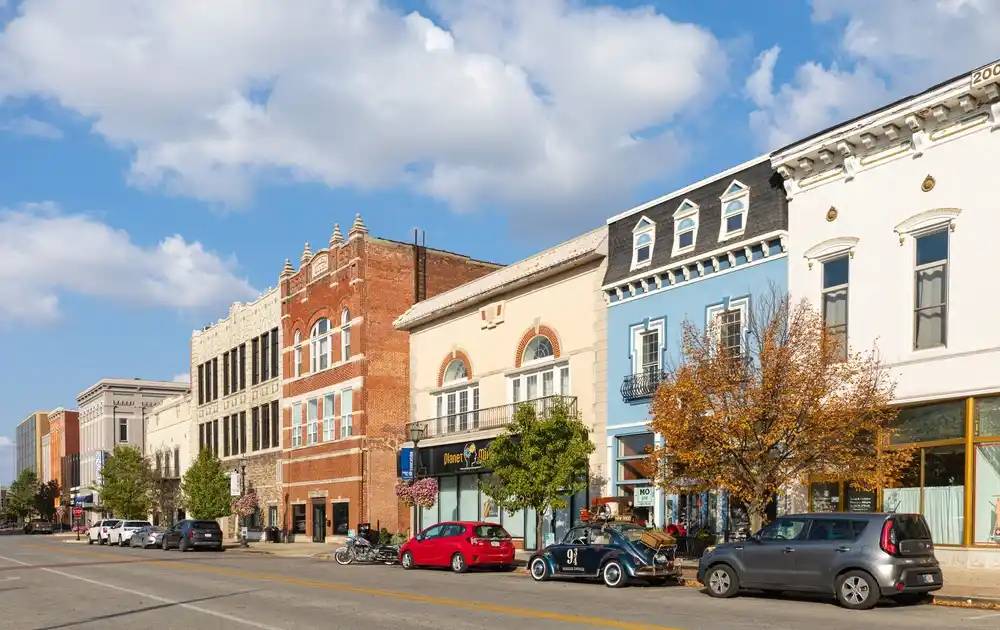 Shutterstock
Shutterstock7. Joplin, Missouri
 Shutterstock
Shutterstock- Cost of living: 17.3% below U.S. average
- Metro population: 179,564
- Median household income: $48,909
- Median home value: $127,800
- Unemployment rate: 3.0%
The city of Joplin is famous (or infamous, perhaps) for two things. First, it’s where notorious bank robbers Bonnie and Clyde went into hiding from the authorities for a while. Secondly, a major tornado ripped through Joplin in 2011, destroying 30% of the city and making national news.
Happily, Joplin has recovered well since 2011. Its recovery was heavily aided by the medical industry — Joplin is home to two major hospitals that serve four different states (Missouri, Kansas, Oklahoma, and Arkansas). Housing costs are 35% below the national average. Groceries, healthcare, and transportation are all relatively affordable too. The unemployment rate even sits at 3%. Not everything about Joplin is perfect, though — the C2ER reports that prescription drugs, phone bills, and even pizza are slightly more expensive than U.S. averages.
 Shutterstock
Shutterstock6. Anniston, Alabama
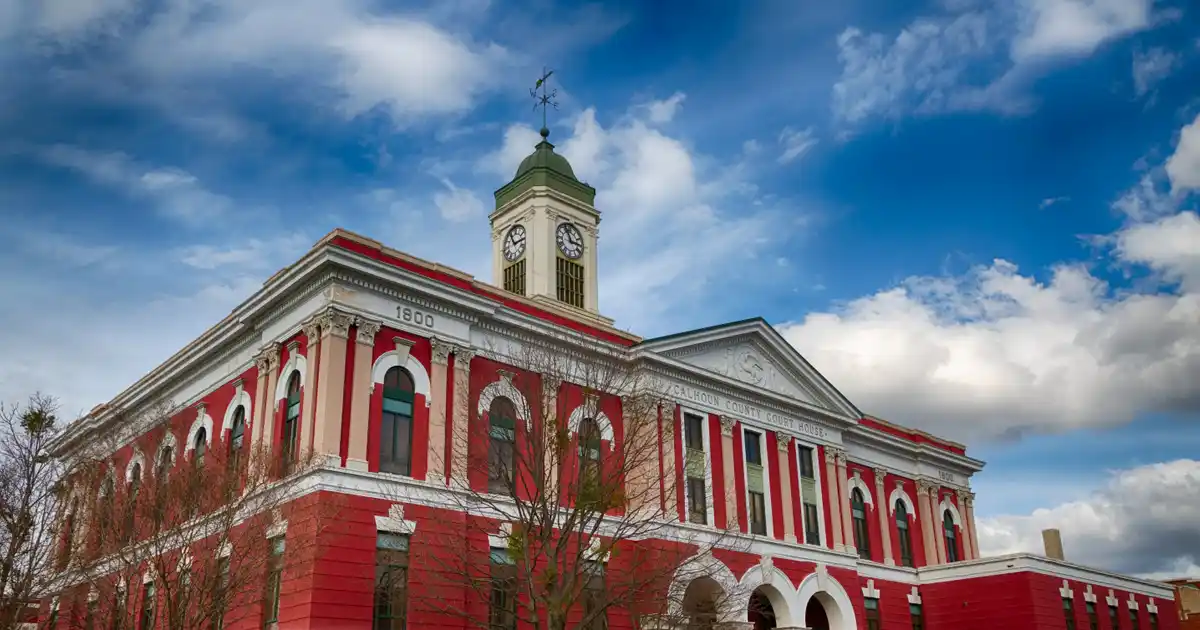 Shutterstock
Shutterstock- Cost of living: 17.7% below U.S. average
- Metro population: 113,605
- Median household income: $48,156
- Median home value: $121,600
- Unemployment rate: 4.1%
For nature lovers, consider the city of Anniston, Alabama as the ideal place to settle cheaply. Located near the Mountain Longleaf National Wildlife Refuge, Anniston is perfect for those who love to bike, hike, run, camp, or otherwise enjoy the great outdoors. If you need a break from nature, you can check out the big city of Birmingham — it’s about an hour’s drive away.
Anniston features a cost of living that is 17.7% below the national average. Unfortunately, that also comes with a median income that is 27% below national averages too. There aren’t a lot of major, brand name employers in the area. Even still, unemployment sits at just 4.1%, meaning there’s plenty of work.
The real draw of Anniston is housing costs. The C2ER calculates that living in Anniston will be a whopping 40% cheaper than what the average American pays. There are tradeoffs, though. Utilities are roughly 25% higher than standard, for example.
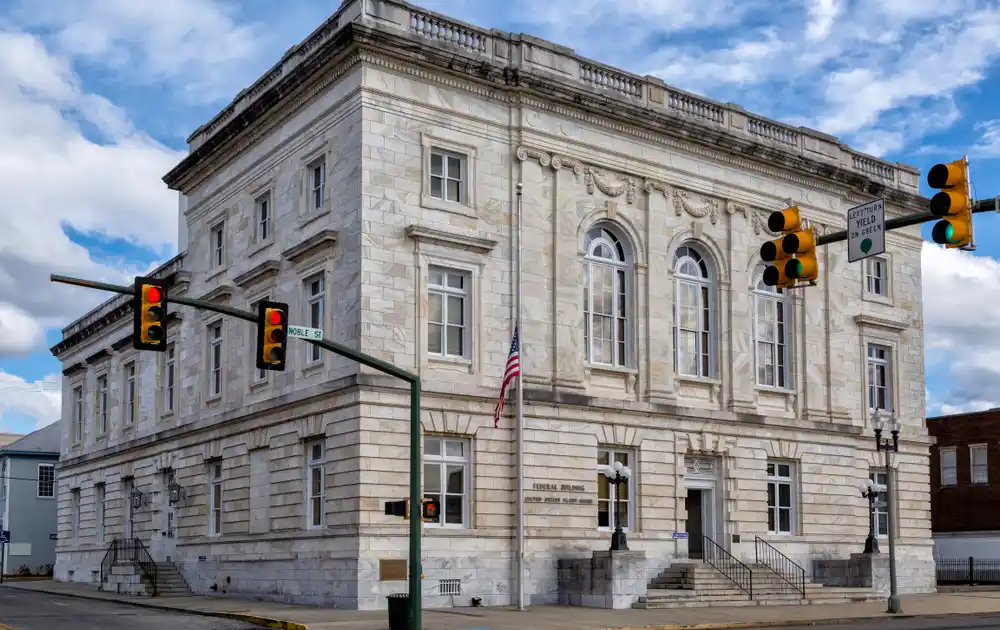 Shutterstock
Shutterstock5. Amarillo, Texas
 Shutterstock
Shutterstock- Cost of living: 18.3% below U.S. average
- Metro population: 269,447
- Median household income: $53,510
- Median home value: $156,300
- Unemployment rate: 3.6%
Breaking into the top five, we have Amarillo, Texas. They say that everything is bigger in Texas, but not living expenses. Amarillo has a total cost of living that is 18.3% below the U.S. average. Need some examples? Dry cleaning bills are 28% cheaper. A trip to the optometrist will save you 35% compared to national averages. And housing costs, the major factor for most of us, are 39% less expensive in Amarillo.
Amarillo’s local economy is strong. They bounced back from major unemployment issues at the start of the pandemic, to a very respectable 3.6% unemployment rate today. (The national average is 4.8%.) All in all, Amarillo is a truly affordable place to live, especially if you love Texas staples like football, BBQ, and cowboy hats.
 Shutterstock
Shutterstock4. Jackson, Mississippi
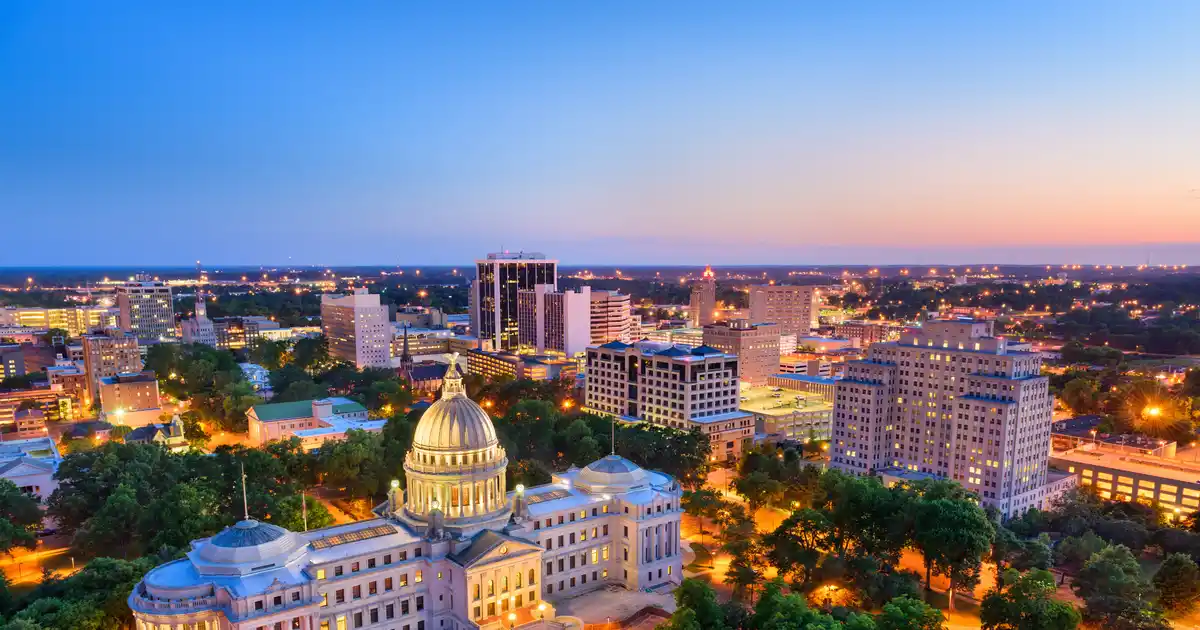 Shutterstock
Shutterstock- Cost of living: 20.9% below U.S. average
- Metro population: 594,800
- Median household income: $52,426
- Median home value: $153,800
- Unemployment rate: 5.4%
Jackson, Mississippi is one of the larger cities on our list, with a population of almost 600,000. That means it has plenty of features you’d expect from a larger city, without the huge increase in cost of living. In fact, Jackson costs a little more than 20% less than the national average. The biggest impact is in housing, which is almost 40% cheaper in Jackson.
Jackson is a great city for history buffs or music fans. Both communities are vibrantly active. There’s also, somewhat surprisingly, a major ballet scene in Jackson. For retirees, Jackson is renowned for its strong healthcare community. Not only is the healthcare more affordable that most other places in the U.S.A, there are an abundance of nurses, doctors, surgeons, and medical facilities in the area.
 Shutterstock
Shutterstock3. McAllen, Texas
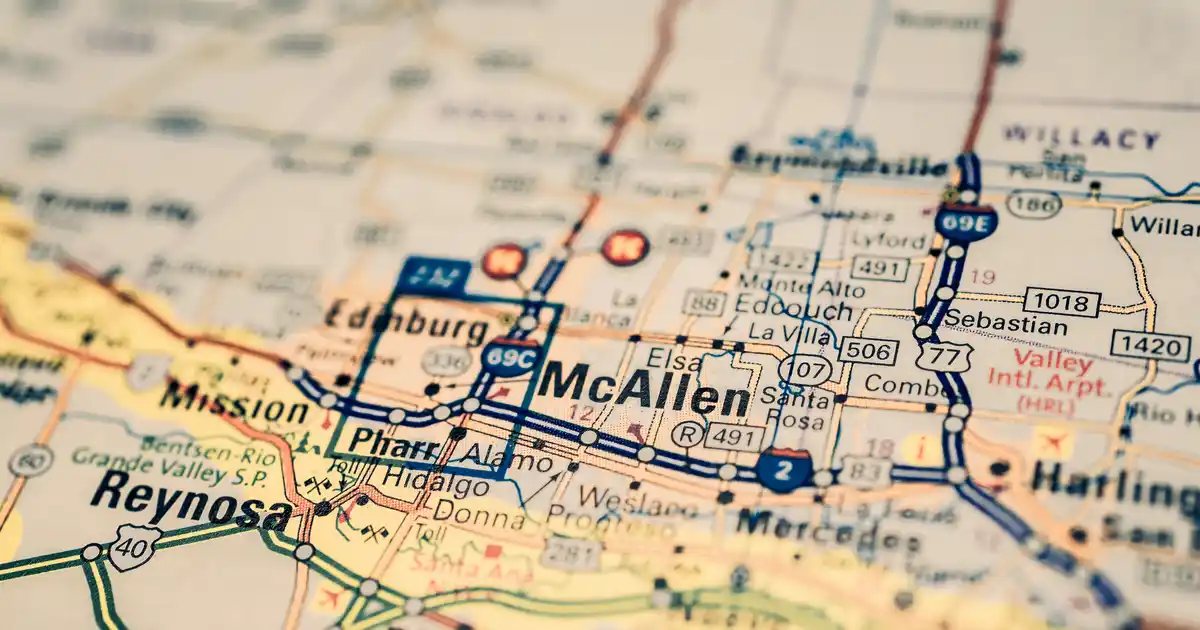 Shutterstock
Shutterstock- Cost of living: 22.3% below U.S. average
- Metro population: 868,707
- Median household income: $41,800
- Median home value: $93,400
- Unemployment rate: 8.9%
Some of the cities on this list are cheap for good reasons — plentiful housing, strong median incomes, and available jobs. Other cities, like McAllen, Texas –, aren’t quite so lucky. Sure, living here is 22.3% cheaper than the national average. However, incomes are generally low, home values aren’t very high, and the employment rate is 8.9% — almost double the national rate.
More than 27% of this border town lives below the poverty line. In comparison, the average in the whole state of Texas is 13.6% and it’s 12.3% nationally. As a result, housing costs are 42% lower than national averages. Both groceries and healthcare are considerably cheaper too. Unfortunately, there aren’t a lot of high-paying jobs to help support even these cheaper living expenses.
 Shutterstock
Shutterstock2. Harlingen, Texas
 Shutterstock
Shutterstock- Cost of living: 22.7% below U.S. average
- Metro population: 423,163
- Median household income: $41,123
- Median home value: $89,000
- Unemployment rate: 7.9%
Remember everything you just read about McAllen? Well, most of it rings true for Harlingen, Texas too. Living expenses are low, but so are incomes and house values. Unemployment is high and 25% of the population officially live in poverty.
If you already have some money saved though, relocating to Harlingen can make it last longer. You’ll pay less for just about everything you can think of, including housing (42% lower). You can rent an average apartment for about $700 a month, which is a steal in most other cities.
The one thing that is more expensive in Harlingen is utilities. You can thank the searing Texas heat for that, as running that A/C will add an extra 10% to your annual energy bill, compared to national averages.
 Shutterstock
Shutterstock1. Kalamazoo, Michigan
 Shutterstock
Shutterstock- Cost of living: 22.9% below U.S. average
- Metro population: 265,066
- Median household income: $56,441
- Median home value: $171,800
- Unemployment rate: 4.6%
It seems like almost every city on this list is from the South. Despite that, the city of Kalamazoo, Michigan claimed the top spot. Not only does it have the most-fun-to-say name, it’s also the cheapest place to live in the entire United States. The cost of living is almost 23% lower than the national average.
Unfortunately for many residents, the low cost of housing, food, utilities, and healthcare is more of a necessity than a luxury. More than 26% of the population lives below the poverty line and the media household income is only $56,400. There are some major economic drivers, though, including the Western Michigan University, pharmaceutical giant Pfizer, and medical equipment maker Stryker.
With a population of 265,00, Kalamazoo has plenty of things to do. There’s three different beaches to enjoy in the summer, and over 140 miles of walking/hiking/running/biking trails. However, the closest “big city” is Chicago — and it’s not that close. You’ll need to spend three hours in a car if you want to check out the Bears, Bulls, Cubs, or White Sox.
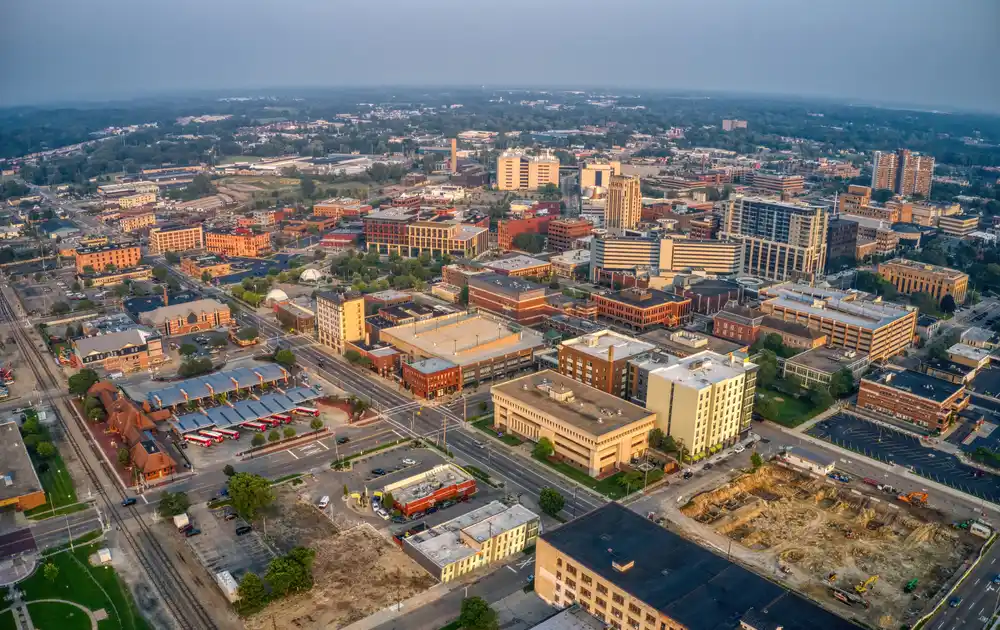 Shutterstock
Shutterstock






